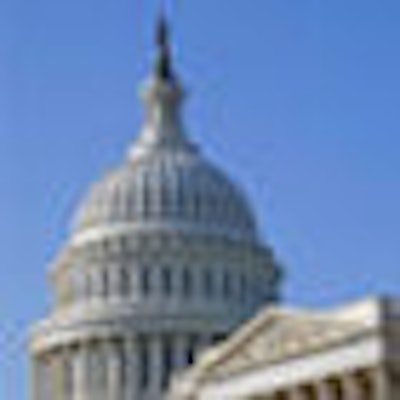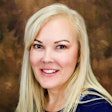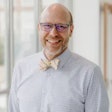
WASHINGTON, DC - Leaders of three dentists' groups Thursday implored the U.S. Institute of Medicine (IOM) to add private practice dentists to two committees that it has charged with analyzing the nation's oral healthcare system.
The Academy of General Dentistry (AGD) said having no one from the private sector makes it more likely the committee will recommend licenses for independent midlevel providers, professionals who can do more than hygienists but less than dentists.
"Now is not the time for experimentation with new models -- now is the time for funding and for action in expanding what we know works," said AGD President David Halpern, D.M.D.
More generally, the committee will be deprived of practical experience because it doesn't include private dentists, he said. That comment was echoed by the presidents of the ADA and American Academy of Pediatric Dentistry (AAPD). All three organizations nominated candidates to the committees without success.
"It's tantamount to forming a panel on air traffic safety and excluding pilots," said ADA President Ronald Tankersley, D.D.S.
But Ann Battrell, R.D.H, M.S.D.H., executive director of the American Dental Hygienists' Association, defended the notion of experimenting with midlevel providers. "How do we know that [they] will work? We try them out," she said.
Two committees
The IOM formed the two committees -- one on oral healthcare access, the Study on Oral Health Access to Services, and the other on public education about oral health, the Study on an Oral Health Initiative -- at the request of the U.S. Health Resources and Services Administration (HRSA). The oral healthcare access committee also has support from the California HealthCare Foundation.
— Ronald Tankersley, D.D.S., president
of the ADA
All members of both groups are university professors or on the staff of healthcare advocacy groups.
The 15-member access committee includes only three dentists, all of whom are professors at dental schools. It has five medical doctors, a nurse, a lawyer, and several members with public health degrees or other advanced degrees.
Likewise, the 14 members of the Study on an Oral Health Initiative include four dentists, all of whom are university professors, along with two hygienists, both also professors. The committee also includes five medical doctors, a nurse, two lawyers, and various other leaders from academics or private foundations.
The access committee held its first meeting March 4 at the National Academy of Sciences Building. It began with a presentation by Marcia Brand, a former hygienist now with the HRSA, who laid out her agency's goals. The committee should recommend ways of improving access to care, she said, particularly for women and children because part of the agency's mandate comes from Title V of the Social Security Act, which is aimed at improving the quality of health in these groups.
Questioned closely by committee members, Brand acknowledged that the missions of the two committees overlap. Both may be concerned with strategies for preventing oral disease, for example; but the mandate for the two committees had evolved "on different tracks" and the overlap was an accident, she explained.
'We can't include everyone'
The committee then took comments from the four professional groups. Dr. Halpern particularly emphasized his concerns about midlevel providers.
"The premise purported is that through providing basic, primary services, the additional care provider permits the dentist to devote more time to complex therapy that only a dentist is trained and qualified to provide," he said. "Frankly, this is precisely what is already occurring in the current dental team model, in my practice, and throughout the country."
One way to increase access to care would be to allow hygienists and assistants to take on an even broader scope of duties, Dr. Halpern added. And he urged the committee to review the problem of conflicting laws on the scope of practice among states. But dentists should always supervise other dental professionals, he insisted.
Dr. Halpern also said that dentists could see a lot more patients, particularly if they hired more hygienists, but in some places hygienists are in short supply and allowing them to practice independently will just increase the shortage in dentists' offices. The cost of dentistry isn't increasing any faster than general inflation, he said. And while there's no evidence that a new category of independent midlevel provider will bring costs down, it would be unfair to provide care from less educated professionals to underserved populations, he said.
Next to speak was James Crall, D.D.S., M.S., Sc.D., president of the American Academy of Pediatric Dentistry, who worried that the committee would focus too much on safety-net programs as opposed to looking at the oral healthcare system as a whole. "The AAPD remains deeply disappointed that those who created this committee did not include a pediatric dentist," he said.
That comment was the only one by the professional groups that elicited a public response; a member of the access committee, Maria Rosa Watson, D.D.S., M.S., Dr.P.H., research director at the Primary Care Coalition of Montgomery County, said she had formerly practiced pediatric dentistry.
In addition to criticizing the committee for not including private practice dentists, Dr. Tankersley said too many of its scheduled meetings were closed to the public. And he urged the committee to take advantage of the ADA's expertise on access to care, an area in which the organization has devoted considerable resources.
Battrell said that the number of dentists is not keeping up with U.S. population growth. Hygienists are well-trained and ready to expand their roles, and allowing them to practice in collaboration with -- rather than under the supervision of -- dentists will increase their availability to patients, she said.
Representative sample?
There was no public discussion about how the committee members were chosen. But IOM Senior Program Officer Tracy Harris, D.P.M., M.P.H., told DrBicuspid.com that the institute had tried to cast a wide net in gathering committee members, following an established IOM protocol.
"We identify areas of expertise for a task, we solicit nominations, then we put together a committee based on not just expertise but trying to get representatives of gender, ethnicity, and geography," she said. Since the committee can't be large enough to incorporate all the expertise it needs, it collects scientific evidence from people outside the committee.
Why no committee member from private practice?
"It's not something that was a purpose[ful] exclusion," Harris said. "People have said, 'You have to have a dentist from this center or that center.' We could not possibly have everyone. But we have people who can look at the whole system of care, and part of what the IOM does is bring in people with a fresh perspective."
The committee's membership could change, she said. "Part of the first meeting was hearing the statement of task," she said. "Now the committee will consider, 'Do we believe the composition of the committee can serve the statement of task?' "
Next up comes the meeting of the second committee, which is charged with recommending ways of educating the public about oral health. Its first meeting is scheduled for March 31, with an almost identical agenda that is likely to attract representatives from the same professional groups, harboring many of the same sentiments.
Copyright © 2010 DrBicuspid.com



















